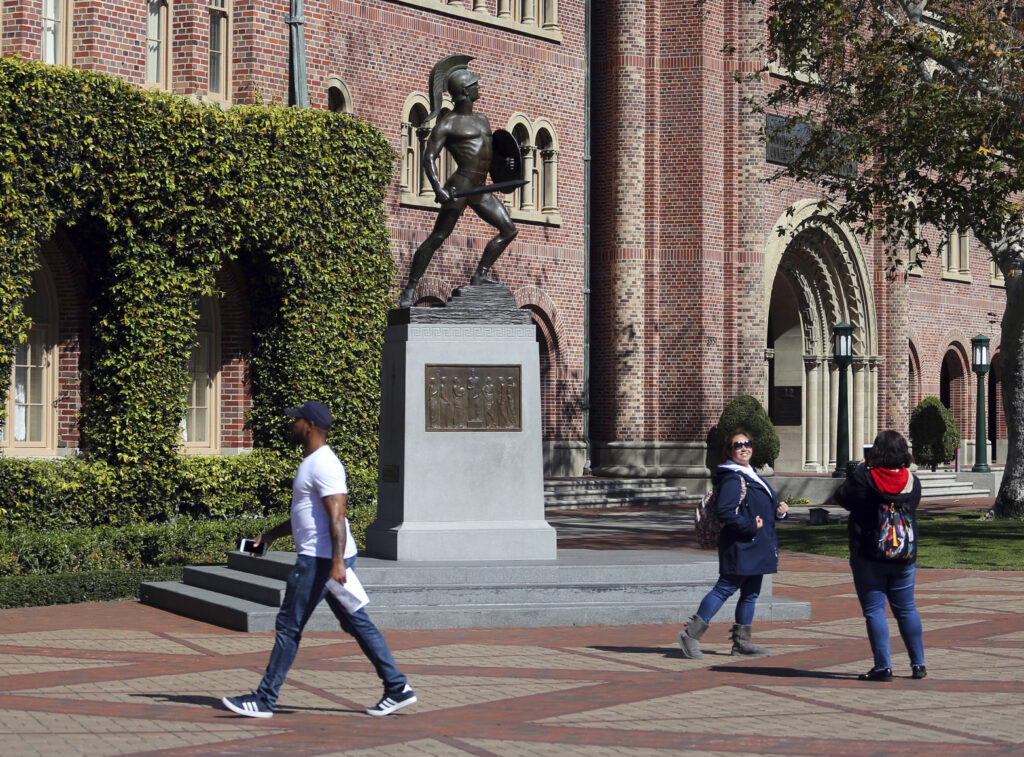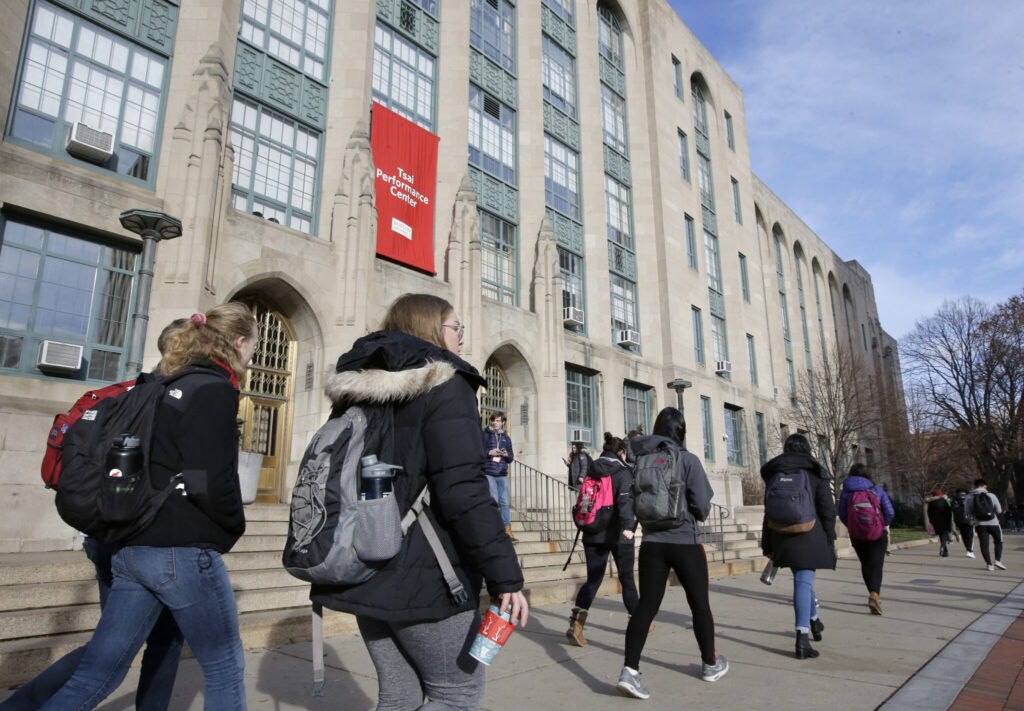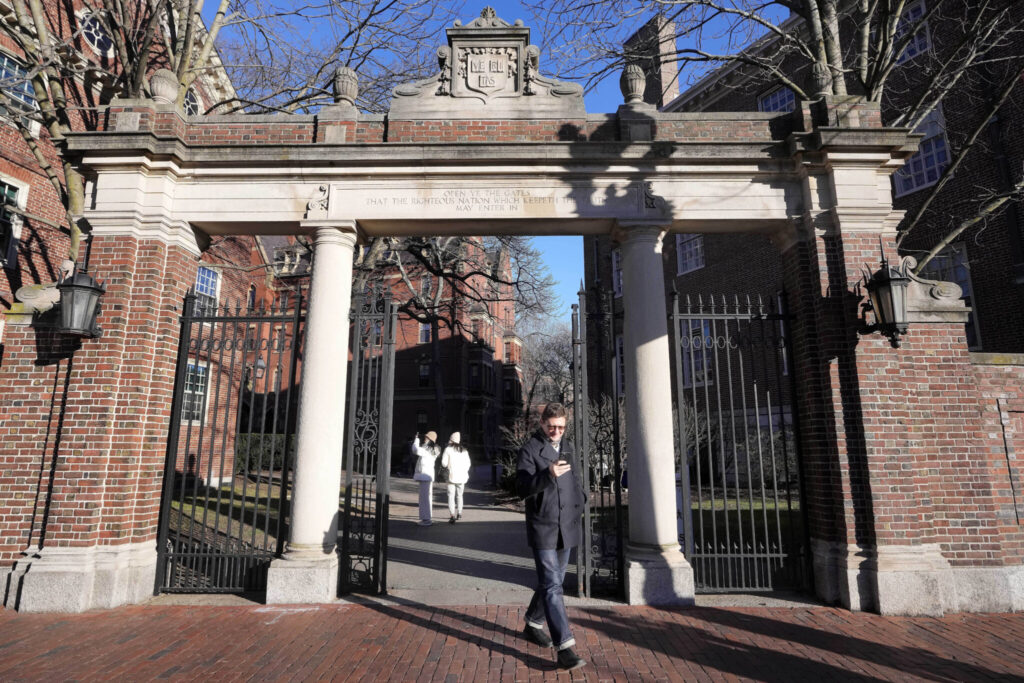As more than 2 million graduating high school students from across the United States finalize their decisions on what college to attend this fall, many are facing jaw-dropping costs — in some cases, as much as $95,000.
Quick Read
- Skyrocketing College Costs: Over 2 million U.S. high school graduates are facing college costs up to $95,000, with some private colleges exceeding the $90,000 mark for the first time.
- Impact on Families: Families with multiple children could spend over $1 million on education, with a wealthy family’s total exceeding this for a four-year degree per child.
- Financial Aid as a Relief: Despite high sticker prices, significant financial aid is available, especially from well-endowed colleges, making private education affordable for lower-income families, sometimes even more so than state schools.
- Wellesley College Example: Wellesley’s cost will surpass $90,000, but nearly 60% of its students receive financial aid, averaging over $62,000, substantially reducing their expenses.
- Federal Aid Application Challenges: Problems with a new Department of Education online form for federal aid have caused delays and confusion, affecting students’ knowledge of their potential aid amounts.
- Potential Impact of Aid Application Issues: Ongoing issues with the federal aid application process could lead to decreased college applications and enrollment, possibly forcing some institutions to close.
- Sticker Shock Concerns: The high upfront costs may deter prospective students from applying to elite institutions, despite actual costs potentially being much lower due to financial aid.
- Colleges with High Sticker Prices: Universities like USC, Harvey Mudd, UPenn, Brown, Dartmouth, and BU have announced costs over $90,000 for the upcoming academic year.
- Harvard’s Financial Aid Program: Despite a cost of up to $91,000, Harvard’s generous aid program significantly reduces the average family contribution, supported by its $50 billion endowment.
- Comparison of College Costs: The average advertised cost for private colleges was $60,000 last year, versus $29,000 for in-state public schools and $47,000 for out-of-state public institutions.
- Unmet Financial Need: The average unmet need at four-year colleges is about $10,000 per year, leading to additional borrowing or financial strain on families.
- Value of a College Education: Despite high costs and potential debt, completing a degree with moderate borrowing is seen as a worthwhile investment for future earnings and career opportunities.
The Associated Press has the story:
College will cost up to $95K this fall. Schools say it’s OK, financial aid can numb sticker shock
Newslooks- MEREDITH, N.H. (AP) —
As more than 2 million graduating high school students from across the United States finalize their decisions on what college to attend this fall, many are facing jaw-dropping costs — in some cases, as much as $95,000.
A number of private colleges — some considered elite and others middle-of-the-pack — have exceeded the $90,000 threshold for the first time this year as they set their annual costs for tuition, board, meals and other expenses. That means a wealthy family with three children could expect to shell out more than $1 million by the time their youngest child completes a four-year degree.

But the sticker price tells only part of the story. Many colleges with large endowments have become more focused in recent years on making college affordable for students who aren’t wealthy. Lower-income families may be required to pay just 10% of the advertised rate and, for some, attending a selective private college can turn out to be cheaper than a state institution.
“Ninety thousand dollars clearly is a lot of money, and it catches people’s attention, for sure,” said Phillip Levine, a professor of economics at Wellesley College near Boston. “But for most people, that is not how much they’re going to pay. The existence of a very generous financial aid system lowers that cost substantially.”
Wellesley is among the colleges where the costs for wealthy students will exceed $90,000 for the first time this fall, with an estimated price tag of $92,000. But the institution points out that nearly 60% of its students will receive financial aid, and the average amount of that aid is more than $62,000, reducing their costs by two-thirds.

But many prospective students this year are facing significant delays and anxiety in finding out how much aid they will be offered by colleges due to major problems with the rollout of a new U.S. Department of Education online form that was supposed to make applying for federal aid easier. Many colleges rely on information from the form for determining their own aid offers to students.
“The rollout has been pure chaos and an absolute disaster,” said Mark Kantrowitz, a financial aid expert.
As well as repeated delays and glitches, he said, there have been other problems with the new system including more stringent requirements for proof of identity from parents, which is deterring thousands of eligible but undocumented parents from applying — even though their children are U.S. citizens and entitled to aid.
Kantrowitz said that if the significant drop in people applying for aid under the new system persists, it could result in lower enrollments and even force some institutions to close.
Levine said his research has shown that the amount lower-income students are paying at elite institutions has actually been declining over the past six years. But he worries that sticker shock will put off some students from even applying to institutions like Wellesley.
“People should be making educational decisions based on the actual cost they have to pay, not their perceived cost,” Levine said. “The problem is that the sticker price is the easiest number to know. It gets the most attention.”

Aside from Wellesley, some of the other colleges with sticker prices of more than $90,000 this year include the University of Southern California at $95,000, Harvey Mudd College in California at $93,000, the University of Pennsylvania at $92,000, Brown University in Rhode Island at $92,000, Dartmouth College in New Hampshire at $91,000, and Boston University at $90,000.
Harvard University in Cambridge, Massachusetts, puts its cost of attendance this fall at up to $91,000, but makes the point that the average parent contribution is just $13,000, and almost a quarter of families pay nothing at all. Harvard can afford a particularly generous student aid program because it has an endowment worth more than $50 billion, the largest of any university.
The sticker prices don’t always provide apples-to-apples comparisons because some colleges include costs like health insurance and travel expenses, while others don’t. And some colleges that last year had sticker prices of close to $90,000, including Columbia University in New York and the University of Chicago, have yet to reveal this year’s expected costs.
In its most recent analysis, the College Board estimated the average advertised costs for private nonprofit colleges last year were $60,000, compared to about $29,000 for students at public in-state institutions and $47,000 at public out-of-state institutions.
Kantrowitz said the average unmet need for students at four-year colleges is about $10,000 per year.
“So families are forced to borrow that money or come up with that money from some other source, and that’s on top of their share of college costs,” he said.
So is college a good investment?
Kantrowitz believes the answer is yes, so long as students borrow in moderation and complete their studies.
“If you graduate and you don’t take on a ridiculous amount of debt, you should be able to repay that debt in a reasonable amount of time,” Kantrowitz said. “But if you drop out, you have the debt, but not the degree that can help you repay the debt.”






